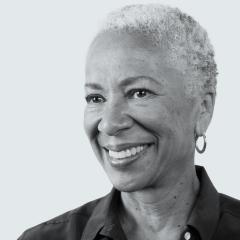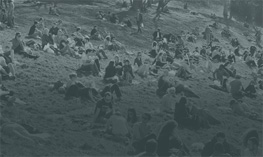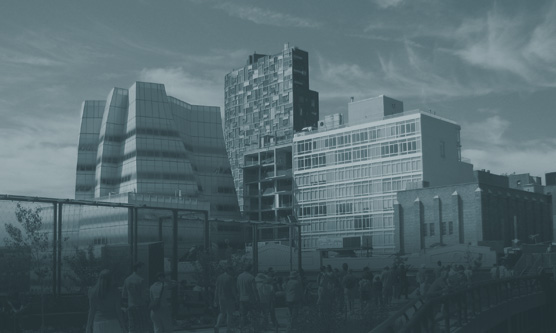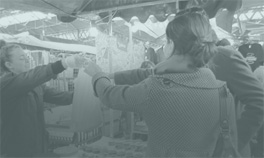Race, Place, and Financial Security: Building Equitable Communities of Opportunity
Written by Angela Glover Blackwell, PolicyLinkI grew up in a completely integrated, entirely African American neighborhood in St. Louis, Missouri. Although that may sound like an oxymoron, it was not uncommon during the 1950s and 1960s. In many cities, racial discrimination meant that most black people lived in neighborhoods where nearly everyone else was black. It also meant those neighborhoods were integrated by income, education, and class. The adults were teachers, lawyers, janitors, nurses, entrepreneurs, shop clerks, ministers, and unemployed. Some families were poor, and many were solidly middle class. Most lived in comfortable homes, paying only a modest share of their income to buy or rent them. Bustling neighborhood stores offered great shopping, beloved community spaces, and afterschool jobs.
We children had aspirations for success. Many of us saw pathways to achieve it, supported by a stable community that had hope, high expectations, role models, and informal job networks. Significant numbers of families were able to send their kids to college.
I tell this story not to romanticize the pre-Civil Rights era but to underscore how community assets form ladders to opportunity, allowing people to move up against formidable odds. My St. Louis neighborhood had many assets that shielded us from the vicious forces of racism and segregation while reinforcing the resolve to strive together toward opportunity. Chief among those assets was financial security. Indeed, it was the foundation for all the other advantages and strengths that contributed to the richness of community that enveloped me.
In the current national discussion about rising income inequality and shrinking economic mobility in America, researchers and policymakers pay little attention to the central role that family financial security plays in creating strong, stable neighborhoods — places with thriving businesses, affordable housing, transportation that connects to jobs, and a tax base to support important amenities and services, starting with good schools. Nor is much said about the flip side of the equation: Strong, stable neighborhoods are critical for building and maintaining family financial security. I define this as access to all the resources that support a good standard of living and make it possible to plan for the future, including quality jobs, affordable homeownership and rentals, and financial institutions that facilitate savings and practice fair lending.
To close our nation’s economic gaps, we must eliminate barriers to opportunity, and that takes us straight to the relationship between family financial security and community vitality. Quite simply, strong communities and family financial security go hand in hand. Each strengthens and depends on the other. This calls on us to recognize which people and which places are at greatest risk of insecurity, and why. And it demands that we implement policies that simultaneously empower the most vulnerable populations to become financially secure and transform struggling neighborhoods into communities of opportunity.
Why Race and Place Matter
I recently sat on a panel on economic mobility with two leading scholars. One argued that a person’s year of birth determines his or her ability to rise in economic status. The other pointed to the socioeconomic status of a person’s parents as the strongest determinant. Armed with data, both men made the case that economic mobility is enhanced or limited by factors outside a person’s control. Yet they were silent on two other factors beyond our control, though these have long been shown to shape our lives and our prospects for success: race and place.
Where we live determines whether we have access to high-quality schools, good jobs, banks, healthy food, and reliable, affordable transportation. Although laws prohibit many of the overtly discriminatory policies of my youth, address continues to be a proxy for race. Patterns of racial segregation of decades past overlap almost completely with patterns of poverty and opportunity today. This, too, I saw in my St. Louis neighborhood. My family was the second black family on what had been an all-white block. Two years later, the block was entirely black. By the time I finished college, some 15 years later, the whole neighborhood was suffering from severe disinvestment. Families that could afford to move began to do so, leaving behind a community of concentrated poverty.
More than one-half of Latinos in the United States and 65 percent of African Americans live in neighborhoods that are majority people of color, generally low-income ones. Two-thirds of black children live in high-poverty communities compared with 6 percent of white children.1 Persistent racial segregation, combined with the concentration of poverty in disinvested urban neighborhoods, older suburbs, and rural communities, has stripped countless communities of wealth, jobs, businesses, and other resources families need to secure their finances now and in the future.
Inequities like this did not occur by happenstance or the force of the free market. Facing limited choices, people of color moved into neighborhoods they could afford, most often ones with limited investment in infrastructure. Such investments continued to disappear as more people of color moved in and white residents fled. This absence of investment was supported by Federal home lending policies, local zoning ordinances, discriminatory banking practices, and real estate covenants through much of the twentieth century which shaped neighborhoods and regions across the country. They blocked African Americans and other targeted groups from obtaining low-cost home loans or even buying or renting a home in many communities, and they encouraged white residents to move to the suburbs.
People of color, African Americans especially, made significant gains in homeownership in the decades after the 1968 passage of the Fair Housing Act (another testament to the power of policy to shape communities and create opportunity) only to have those gains wiped out by the financial collapse beginning in 2007. African American, Latino, and Asian households lost more than half of their wealth compared with a loss of 16 percent for white households during the Great Recession.2 It was the largest loss of wealth for black families in recent history, brought about in no small part by targeted predatory lending.3
Since then, white households have recouped their losses and seen their wealth grow, while the wealth of households of color has continued to decline. The wealth of white households was 13 times the median wealth of black households in 2013.4 Including retirement savings, African Americans hold just $200 in liquid assets, that is, the household savings and equity that can be readily converted into cash in the event of catastrophic illness, unemployment, or another emergency. Latinos hold about $340, compared to $23,000 for white households.5
For many families, a home is their most valuable asset and an important toehold to the middle class. Policies that restore access to homeownership for all communities are therefore critical for families and their neighborhoods. Homeownership, however, is not the only way to make families and neighborhoods secure and strong. Nor is it sufficient. Rather, we must build equitable communities of opportunity using a comprehensive approach focused both on vulnerable places and the people who live there.
Investing in Communities of Opportunity
First, a definition of communities of opportunity. In simplest terms, they are places that have the resources and amenities we all need to thrive. This includes robust businesses, including banks and grocery stores, that contribute to community vitality, health, family financial security, and an ample tax base. It includes a mix of housing that provides high-quality affordable options to families in every economic bracket.
Communities of opportunity have safe, clean streets, sidewalks, and parks that are well serviced and maintained by government. They have high-quality affordable child care, strong early education programs, and great K-12 schools. They have public transportation that connects efficiently to all the places that residents need to go — employment centers, libraries, doctors, museums, community college. Most basically, communities of opportunity provide access to jobs that pay wages that families can live on and that offer opportunities to advance.
Many of the same policies and investments needed to build communities of opportunity also would embed financial security over the life cycle of families. That is because opportunities to build and preserve family wealth and assets exist in many sectors and systems, including some, like the criminal justice system, where finance experts and policymakers never look. Below are four ways to build strong, opportunity-rich communities while supporting low-income people and people of color to become and remain financially secure.
Invest in Good Jobs and New Businesses
A major driver of the racial economic gap is household income. People of color are over-represented among minimum-wage workers. The current federal minimum wage, $7.25 an hour, is lower in real value than in 1956.6 A full-time minimum-wage worker earns $15,080 a year, $4,000 below the federal poverty line for a family of three.7 A federal minimum wage of $10.10 would raise wages for 30 million people, 46 percent of them people of color, and result in a $32.6 billion net increase in economic activity.8 Raising the minimum wage is a must. Increasing it to $15 would be even better.
We also must invest in small businesses. Not only are they an important mechanism to build family wealth, but small businesses also create two out of every three jobs in America.9 Access to capital often determines an entrepreneur’s ability to transform an idea into a lucrative business, yet African American-owned businesses received only 1.7 percent of Small Business Administration loans in 2013.10 Expanded access to financing, entrepreneur training, and programs that link all businesses, especially business owners of color, to larger markets and strategic growth opportunities would spur the creation and expansion of businesses and generate jobs for the people who need them most.
Make Housing Affordable for All
Housing costs consume a disproportionately large share of the income of people of color and low-income people, making it difficult for them to save, invest for the future, or spend money in the community. Affordable rent and mortgages, along with access to transportation, can substantially decrease household costs and increase discretionary income.11 Investments in affordable housing also preserve, improve, and develop diverse housing options that prevent displacement, a critical consideration as urban economies swiftly evolve to harness the skills, energy, and networks of a young, globally connected workforce. More needs to be done to ensure that homeownership remains a safe investment, especially for vulnerable populations, and that renters have adequate protections against rent increases, displacement, and speculative buying.
One good place to start to improve housing affordability is with the tax code. For example, changing the mortgage interest deduction into a refundable credit would allow low-income homeowners, who generally do not itemize deductions, to take advantage of one of the biggest tax benefits available to the middle class and affluent. Amending the tax code to offer a federal renter’s credit also would address long-standing inequities in housing-related policy.
Make Higher Education Affordable and Attainable
Postsecondary training and college degrees are critical for financial security. By 2020, 65 percent of jobs will require some college education.12 Yet college costs have soared beyond reach for all but the wealthiest families, leaving millions of young adults — disproportionately those of color — saddled with debt that will drain their net wealth and discretionary income for years to come.13 Policy that plants the early seed of savings for college can have an impact on college completion, future earnings, and long-term financial security. That is why a growing number of states and municipalities have launched efforts like San Francisco’s Kindergarten to College program, which deposits $50 into a savings account for each child entering public school and provides an additional $50 for poor students.
Of course, solutions must also target college costs themselves. President Obama’s proposal to make community college free for all would mark a big step forward.
Reform the Criminal Justice System
Important as it is to focus on policies that bolster family financial security and community vitality, that is not enough. We also must change policies and practices that strip wealth from low-income communities and communities of color. The staggering numbers of people of color in prisons represents one of the most appalling wealth-stripping mechanisms in our nation’s history (see the essay by Vivian Nixon and Susan Sturm in this book). Mandatory sentencing for nonviolent offenders, jail time to penalize lapses in child support, or as Ferguson, MO, brought to light, incarceration as punishment for nonpayment of exorbitant court fines and fees for traffic violations, have funneled millions of people behind bars. States spend billions of dollars to keep them there. Criminal records create lifelong barriers to getting a job, obtaining a loan, attending college, and taking other steps toward self-sufficiency and success. This is disastrous for people with records, their families, and their communities.
“Ban the box” policies, which prohibit questions about criminal records on employment applications, open opportunities for people who have served their time. In addition, reforms aimed at dismantling systems of harsh, disproportionate punishment for youth and adults are critical. In November 2014, California voters overwhelmingly approved Proposition 47, which reclassifies six lower-level nonviolent crimes from felonies to misdemeanors. Other states should use this as a model.
Equity Is a Superior Growth Model
Building equitable communities of opportunity has reached a new urgency in the face of rapid demographic change. By 2044, the majority of the U.S population will be people of color, the very people who have disproportionately been trapped in disinvested communities and burdened with financial risk and insecurity.
This puts our nation at a crossroads. We can continue to squander the talents and skills of large swaths of our population, or we can invest in the places where low-income people and people of color live, and make sure these communities offer full access to the resources and opportunities it takes to prosper and succeed.
There’s really no choice at all, because only one path leads forward. Equity — just and fair inclusion in a society in which all can participate, prosper, and reach their full potential — is more than the moral thing to do. It’s an economic imperative for families, communities, regions, and our nation.
NOTES
- Patrick Sharkey, “Neighborhoods and the Black-White Mobility Gap.” (Washington, DC: Pew Charitable Trusts, July 2009).
- Rakesh Kochhar, Richard Fry, and Paul Taylor. “Wealth Gaps Rise to Record Highs Between Whites, Blacks, Hispanics.” (Washington, DC: Pew Research Center, July 2011).
- Jacob S. Rugh, Len Albright, and Douglas S. Massey, “Race, Space, and Cumulative Disadvantage: A Case Study of the Subprime Lending Collapse,” Social Problems 62 (2) (2015): 186-218.
- Rakesh Kochhar and Richard Fry. “Wealth Inequality Has Widened along Racial, Ethnic Lines Since End of Great Recession.” (Washington, DC: Pew Research Center, December 2014).
- Rebecca Tippett et al., “Beyond Broke: Why Closing the Racial Wealth Gap is a Priority for National Economic Security” (Durham, NH: Center for Global Policy Solutions, Duke University, May 2014).
- “Facts on The Fair Minimum Wage Act of 2012.” (Washington D.C., U.S. House of Representatives, Office of Ranking Democratic Member George Miller, June 2012).
- “What are the annual earnings for a full-time minimum wage worker?” (Davis, CA: Center for Poverty Research at University of California at Davis, 2013).
- David Cooper and Douglas Hall. “Raising the federal minimum wage to $10.10 would give working families, and the overall economy, a much-needed boost.” (Washington, DC: Economic Policy Institute. March 2013).
- Sarah Treuhaft et al., “America’s Tomorrow: Equity Is the Superior Growth Model.” (Oakland, CA, PolicyLink, 2011).
- Ruth Simon and Tom McGinty, “Loan Rebound Misses Black Businesses,” Wall Street Journal, March 14, 2014.
- Keith Wardrip et al., “The Role of Affordable Housing in Creating Jobs and Stimulating Local Economic Development: A Review of the Literature.” (Washington, DC.: Center for Housing Policy, January 2011).
- Anthony Carnevale et al., “Recovery. Job Growth and Education Requirements through 2020.” (Washington, DC.: Georgetown Public Policy Institute, Georgetown University, June 2013).
- Mark Huelsman, “The Debt Divide The Racial and Class Bias Behind the ‘New Normal’ of Student Borrowing.” (New York: Demos, May 2015).




